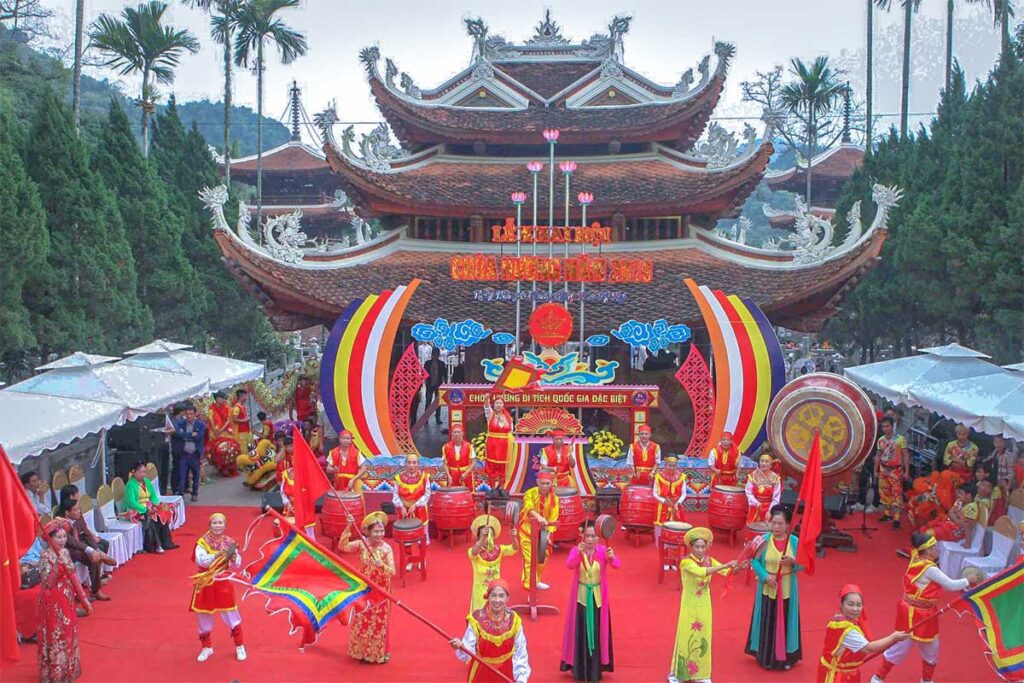What is the Perfume Pagoda Festival?
The Perfume Pagoda Festival is a Buddhist pilgrimage that has been part of northern Vietnam’s spiritual life for centuries. Each spring, from the sixth day of the Lunar New Year, pilgrims travel to the Perfume Pagoda complex to pray for health, luck, prosperity, and peace for their families. For many Vietnamese, starting the year with a visit here is as much about cultural tradition as it is about religion.
The timing is not accidental. Spring marks the end of winter and the beginning of the agricultural year, a season of renewal and fresh hopes. Visiting the Perfume Pagoda during this period is believed to bring blessings for farming, business, studies, and family life. Over time, what began as a deeply religious journey has also become one of Vietnam’s biggest cultural events, blending worship with community gathering, nature, and tourism.
What is the Perfume Pagoda?
The festival takes place at the Perfume Pagoda complex, a vast spiritual site about 60–70 km southwest of Hanoi in Huong Son, My Duc District. Spread across a dramatic landscape of limestone mountains, caves, and rivers, the complex is not a single pagoda but an entire network of temples and shrines hidden in the hills and forests.
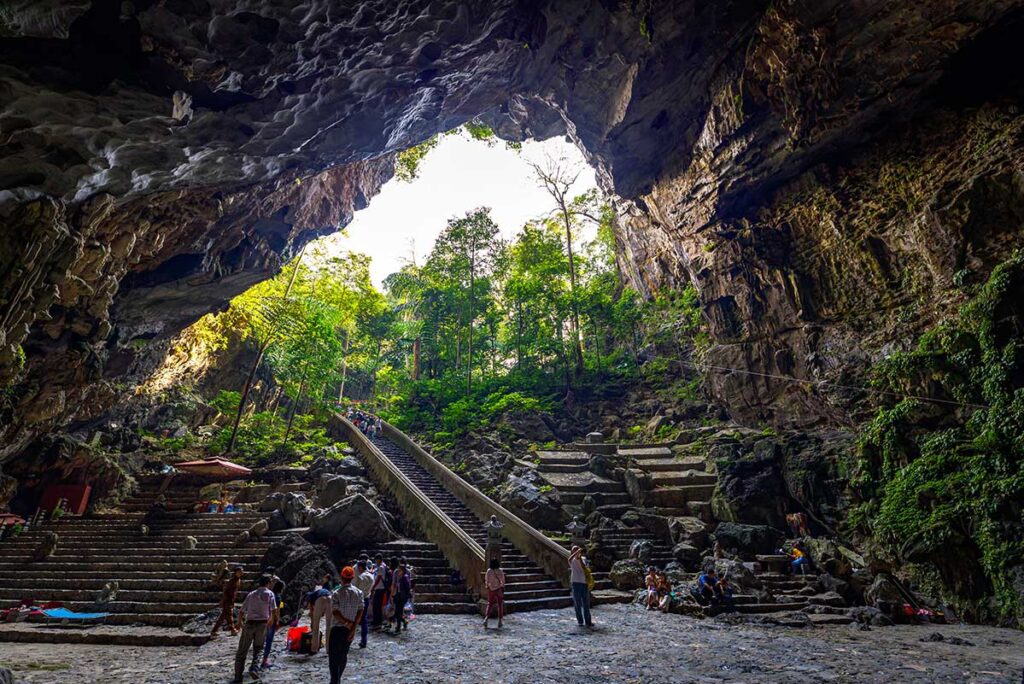
The most important site is Huong Tich Cave, known as the “inner pagoda,” which has been a sacred destination for centuries. An inscription carved by Lord Trinh Sam in 1770 praised it as “the most beautiful cave under the sky.” The complex itself dates back to the late 17th century, with later expansions adding more pagodas and shrines along the pilgrimage route. Today, it remains both a major Buddhist sanctuary and one of northern Vietnam’s most famous cultural landmarks.
To learn more about the Perfume Pagoda itself, read our full travel guide to Perfume Pagoda.
When is the Perfume Pagoda Festival?
The Perfume Pagoda Festival begins on the 6th day of the Lunar New Year and runs until the end of the third lunar month, which usually means early February to late April on the Gregorian calendar.
The most important moments are the opening ceremony and the full moon of the second lunar month, when the crowds reach their peak. These days are considered the most auspicious for making offerings and prayers, and they attract the largest number of pilgrims from across Vietnam.
Although the festival officially lasts for three months, most of the activity is concentrated in the first weeks and around the full moon period. Outside those times, the pagoda complex is still open and busy, but the atmosphere is less overwhelming. For foreign visitors, this distinction is important: visiting in early or peak days offers the full spectacle, while later in the season brings a calmer experience.
Highlights of the Perfume Pagoda Festival
1. Boat journey on Yen Stream
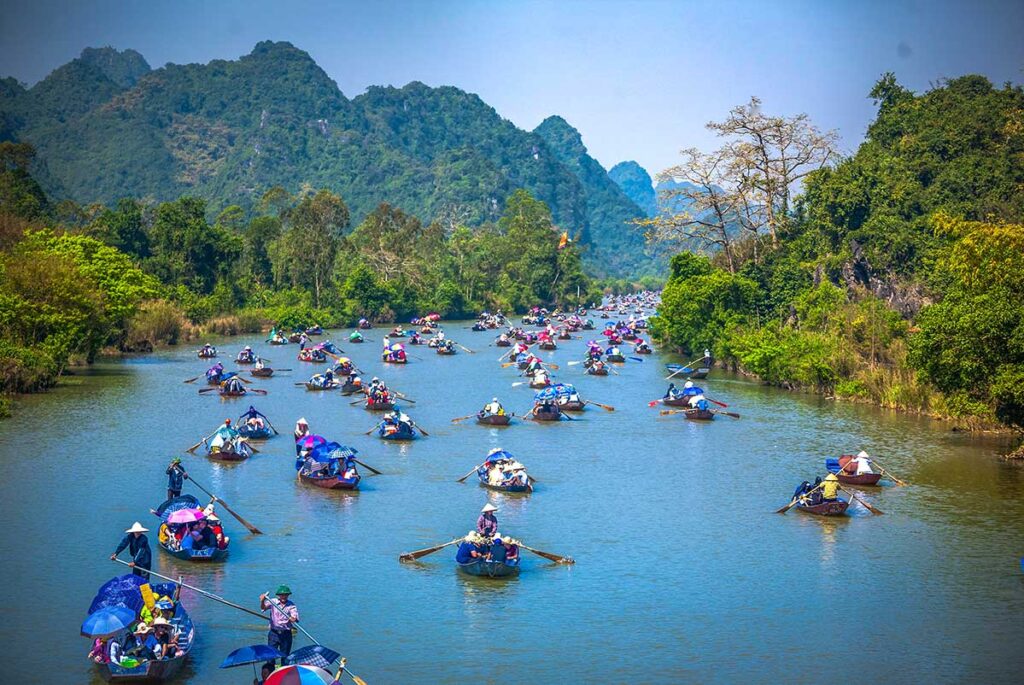
The journey begins with a boat ride along the Yen Stream, surrounded by rice fields and dramatic limestone cliffs. On quiet days, this ride can feel almost meditative, but during the festival the river is often packed with hundreds of boats. The sight of so many pilgrims traveling together is impressive, though it also means less tranquility and more waiting.
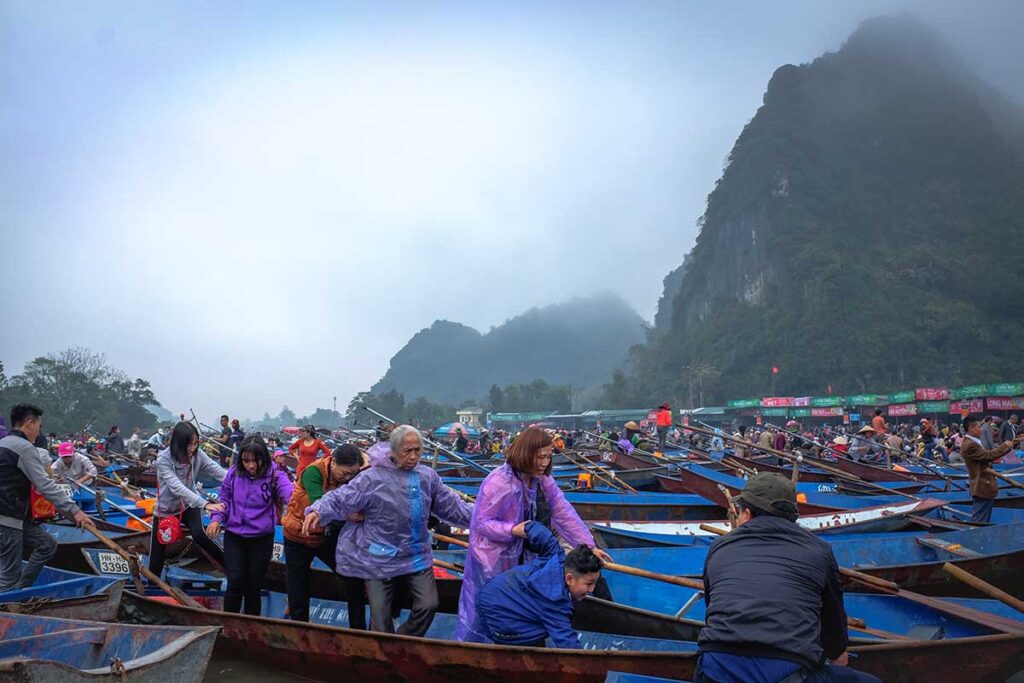
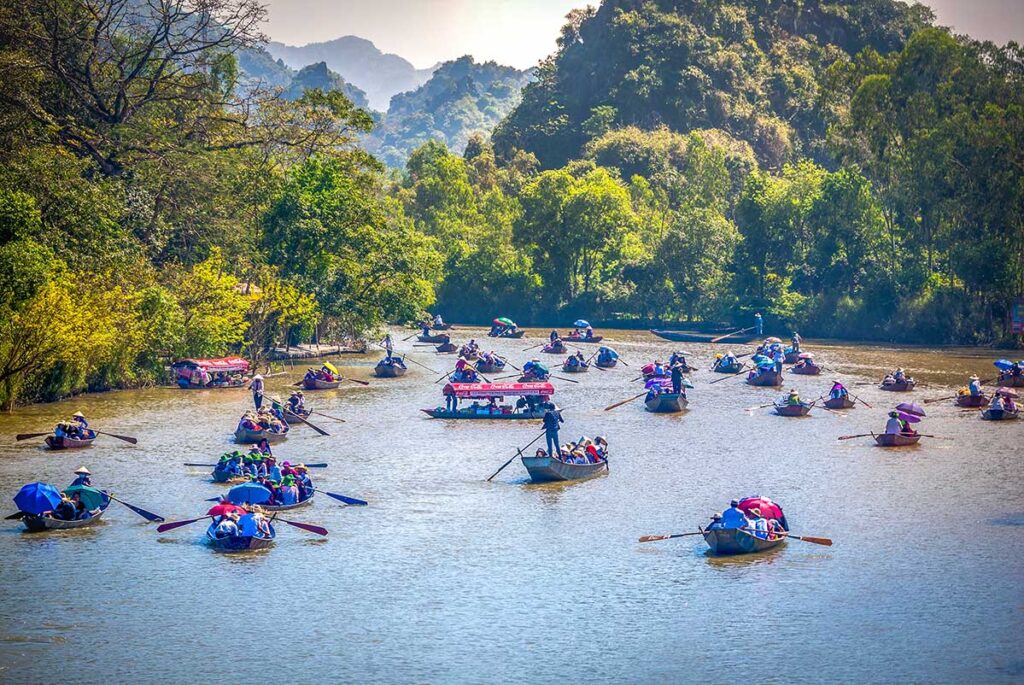
All boats are rowed manually, usually by local women, and take around an hour each way. For many visitors this is the most memorable part of the trip, but it’s also where overcrowding is most noticeable, especially on weekends and peak festival days.
2. Pilgrimage climb to Huong Tich Cave
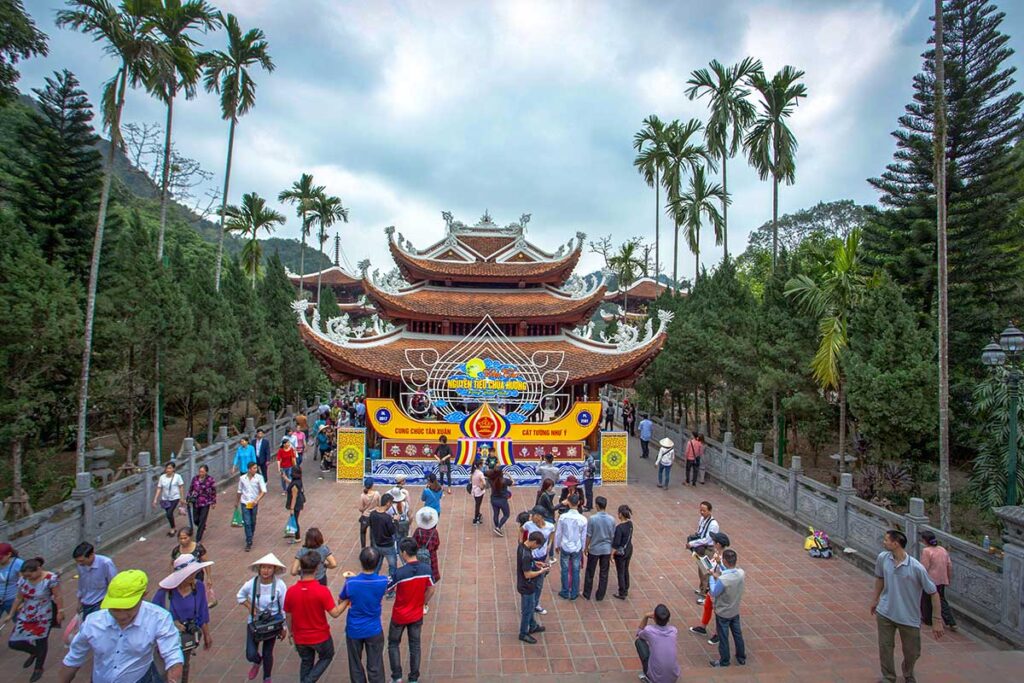
From the boat pier, the path continues on foot or by cable car to Huong Tich Cave, the main pilgrimage site. The traditional way is to climb thousands of stone steps, which is seen as part of the spiritual journey. The climb is steep in places but manageable for most visitors with breaks.
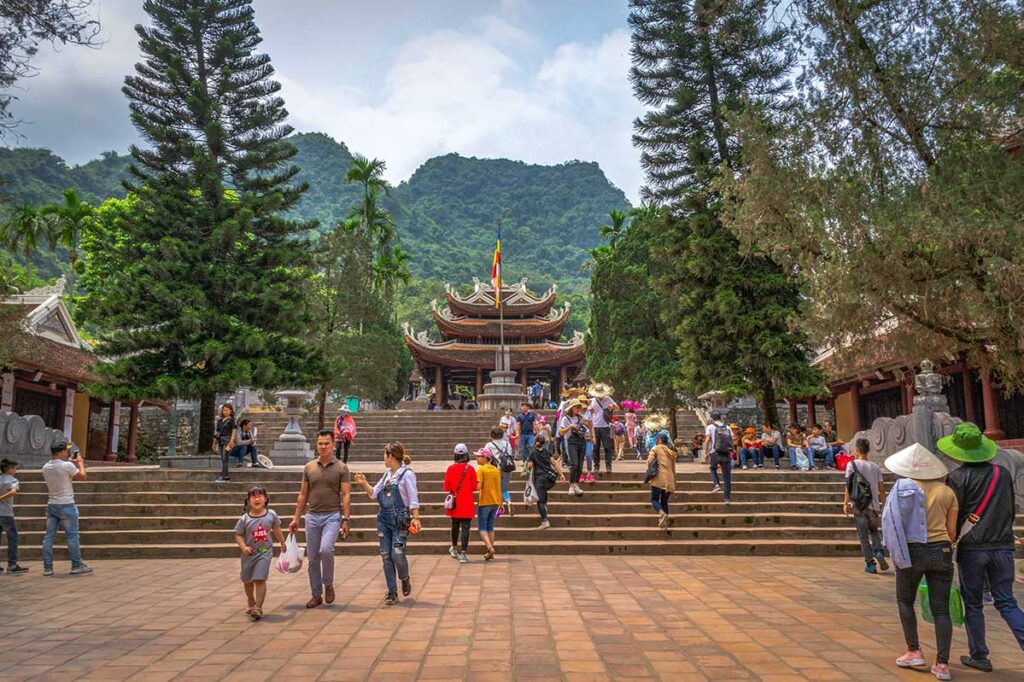
If you prefer, the cable car saves time and energy, though it can be just as crowded. At the top, pilgrims enter Huong Tich Cave to burn incense and pray. The atmosphere is a mix of sacred reverence and festival chaos — smoke, chanting, and the constant movement of people.
3. Main Rituals & Offerings
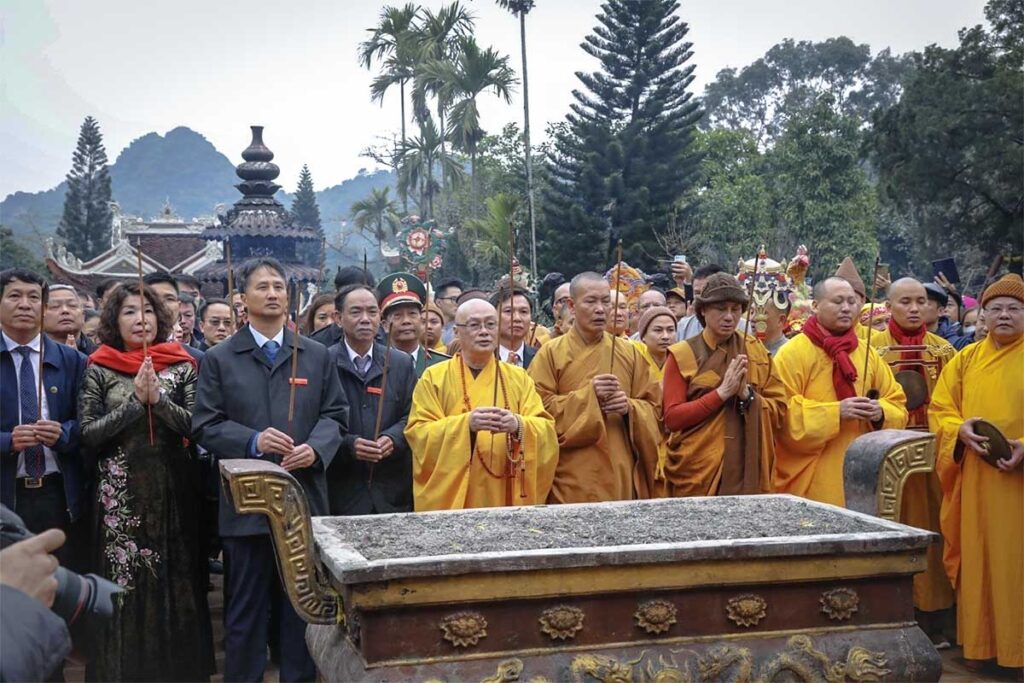
The central focus of the Perfume Pagoda Festival is prayer and offerings. Pilgrims bring incense, fruit, and symbolic gifts to seek blessings from Buddha and other deities for health, prosperity, and good fortune in the coming year. Some families perform elaborate ceremonies, while others simply light incense and make a short prayer.
For foreign visitors, the rituals can feel overwhelming, but they also provide a unique glimpse into Vietnamese Buddhist practice. It’s worth remembering that this is first and foremost a religious event, not just a tourist attraction.
4. Cultural performances
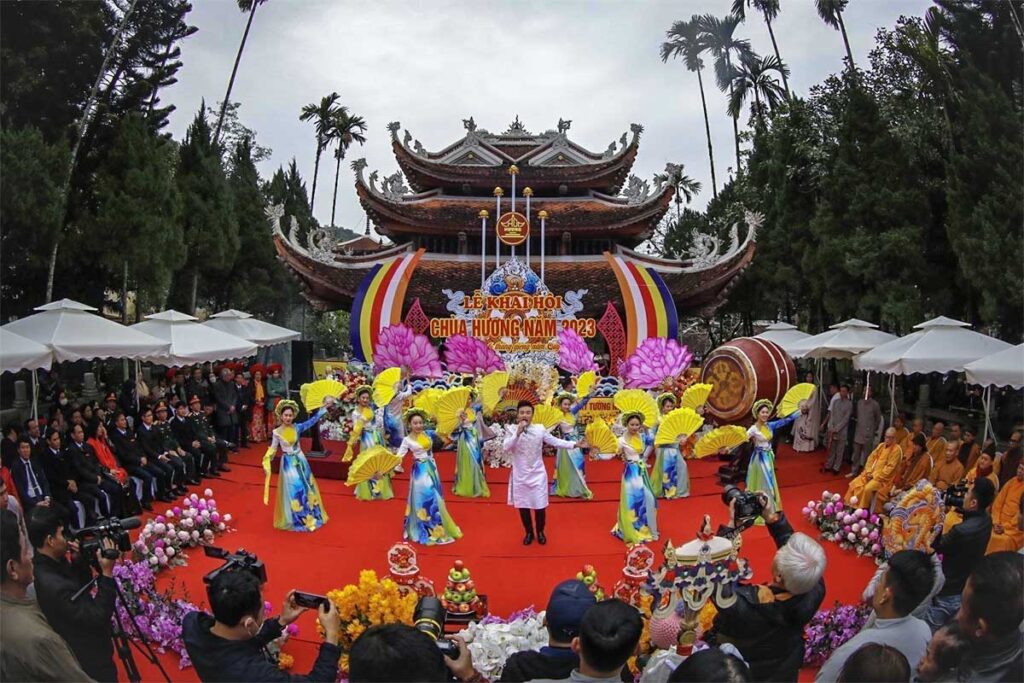
Beyond the religious rituals, the Perfume Pagoda Festival also features traditional cultural performances. These can include cheo opera, puppet shows, and gong music performed by the Muong ethnic minority. Such performances are not held everywhere in the complex, but they add to the festive atmosphere when they take place.
While they are entertaining, keep in mind they can be sporadic and sometimes aimed more at domestic tourists. Don’t expect a formal program — part of the experience is stumbling upon a performance as you explore.
5. Market & Food stalls
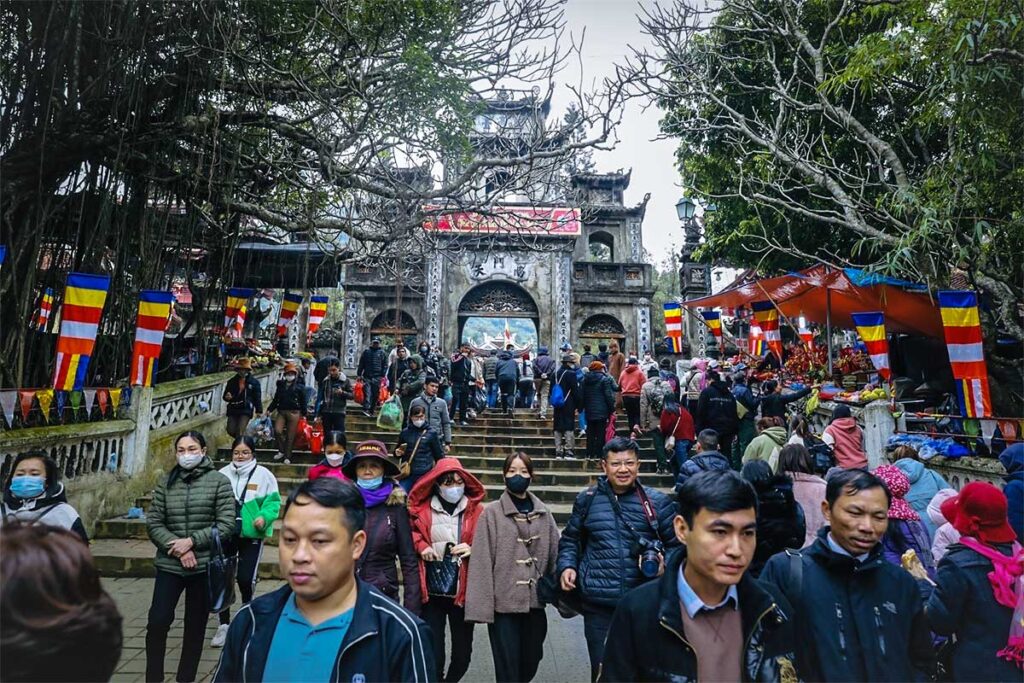
Like many Vietnamese festivals, the Perfume Pagoda event is also a huge market. Along the pilgrimage route and near the pagodas, countless stalls sell everything from incense and trinkets to street food and souvenirs. The smells of grilled meat, fried snacks, and incense smoke all mix together, creating an atmosphere that is lively but can also feel chaotic.
While some visitors enjoy trying local dishes here, the food is not always the cleanest, and prices may be inflated for tourists. For those sensitive to crowds, noise, or aggressive selling, this part of the festival can feel overwhelming.
6. Special sites along the way
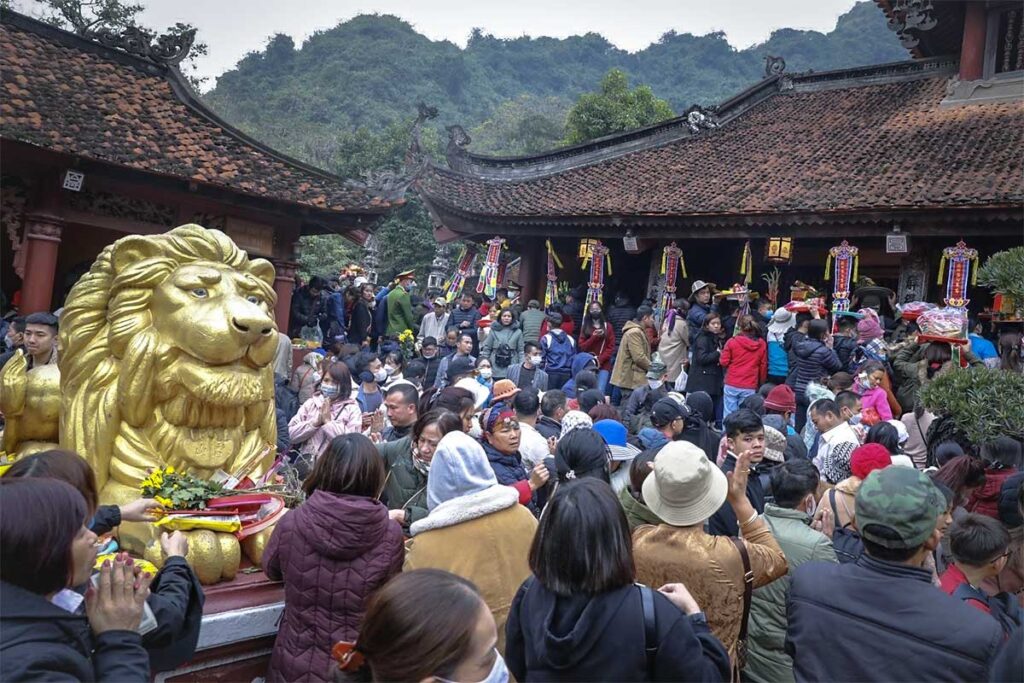
The pilgrimage route is dotted with important temples and pagodas, each with its own meaning. Thien Tru Pagoda, near the boat landing, often serves as the starting point. Giai Oan Pagoda is where pilgrims pray to wash away past sins before continuing the journey. Finally, Huong Tich Cave is the ultimate destination, regarded as the “inner pagoda” and the holiest site in the complex.
Visiting these sites during the Perfume Pagoda Festival is both a spiritual and cultural experience, though be prepared for long waits to enter the most sacred spots.
How to get to the Perfume Pagoda Festival
The Perfume Pagoda is about 70 km southwest of Hanoi, in My Duc District. The journey takes around two hours, but because the site is remote and involves boat transfers, it’s not as straightforward as visiting other day-trip destinations from the capital.
Guided tour (Group or Private)
The most convenient option is to join a guided tour from Hanoi. These usually include round-trip transport, boat tickets, entrance fees, and sometimes a guide who can explain the rituals and temples. Group tours are cheaper but less flexible, while private tours give you more control over timing — a big advantage if you want to avoid the busiest crowds.
Private Car with Driver
Hiring a private car with driver is another good option. You get flexibility in departure time and can move at your own pace, but you’ll need to handle the logistics at the site yourself — buying tickets, arranging boats, and navigating the crowds. This can be fine for experienced travelers, but first-time visitors may find it a bit confusing.
Why motorbike isn’t ideal
Although some travelers consider renting a motorbike, it’s not the best choice for this trip. The ride is long and traffic-heavy, and once you arrive you still need to arrange boat transport. With festival crowds and narrow rural roads, it’s more stressful than rewarding unless you are very confident on Vietnamese roads.
Public bus
There is also a public bus from Hanoi to My Duc, but it only gets you part of the way. You’ll still need to take a taxi or motorbike taxi for the last stretch, then arrange your boat. For budget-conscious travelers it’s possible, but given the time and hassle, most foreigners find tours or private cars far more practical.
Is the Perfume Pagoda Festival worth visiting?
The Perfume Pagoda Festival is without doubt an impressive cultural and religious event. The combination of boat rides, mountain temples, and Buddhist rituals makes it unique in Vietnam. For locals, it is deeply meaningful; for visitors, it offers a chance to witness an authentic pilgrimage that has been taking place for centuries.
At the same time, the festival is extremely crowded and commercialized. On peak days, the Yen Stream is jammed with boats, lines for the cable car can take hours, and the sacred caves fill with smoke and noise. Market stalls selling souvenirs and food dominate much of the route, which can take away from the spiritual atmosphere. If you’re expecting quiet contemplation, this is not the right event.
The festival is best suited for travelers interested in Buddhism, Vietnamese culture, or local traditions, and those who don’t mind navigating large crowds. If your main goal is to enjoy the natural scenery of the pagoda complex, visiting outside of festival season may be more enjoyable.
